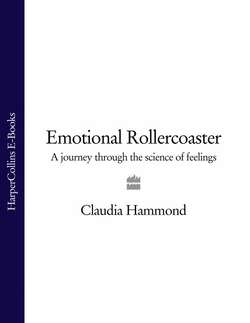Читать книгу Emotional Rollercoaster: A Journey Through the Science of Feelings - Claudia Hammond - Страница 18
the sad face
ОглавлениеIf sadness is to serve any communicative purpose, it needs to be obvious. When Darwin spent time studying the way the face expresses misery he noted that in many different cultures pulling down the corners of the mouth indicated sadness, hence the phrase ‘down in the mouth’. What intrigues me about the facial expression of sadness is that it’s usually more fleeting than the experience of sadness. You might feel sad for days, but only look sad some of the time. Concealing your feelings is possible, if tiring. As I discussed in the last chapter, fake smiles can be detected due to the lack of involvement of the muscles around the eyes. Darwin describes sitting opposite a woman in a railway carriage who looked perfectly content, but for the fact that the corners of her mouth were turned down. This revealed her true feelings. Even a slight turning down of the corners of the mouth conveys sadness. I’ve suffered from this myself. When my mouth is closed and not moving, there’s a slight tendency for the corners to turn down and people often ask me whether I’m miserable when in fact I’m just concentrating. A few months ago I was standing waiting to meet a friend in Chinatown in London, feeling perfectly contented, when a policeman approached me to ask whether I was all right. He and his colleagues had seen me on the closed circuit camera screens in their van and thought I looked so sad and anxious that they wondered whether I was being followed. The same sort of thing used to happen to my grandfather, whose mouth was also wont to turn down.
In Tierra del Fuego local people tried to explain to Darwin that the captain of the boat was feeling sad by pulling down their cheeks with both hands to make the face as long as possible. Darwin went to great lengths to explain another feature of the expression of sadness which he called ‘obliquity of the eyebrows’. The ends of the eyebrows nearest the nose are raised, causing the brow to furrow slightly. He calls this the grief muscle and notes that although it is contracted when we feel sad, only some people can move it voluntarily, an ability which seems to be inherited. The world-renowned expert on facial expressions, Paul Ekman, has studied identical twins who were raised apart and discovered that if one twin is able to flex this muscle, so can the other.
Along with general posture and tone of voice, facial expressions help us to spot emotions in others, but while some people are excellent at reading these signals and working out how another person is feeling, others won’t even notice. In fact the emotions we are best at observing in others are the same emotions we are experiencing ourselves. Therefore, although one might expect a depressed person to be too unhappy and concerned with their own misery to notice how someone else is feeling, in fact it’s the reverse. Depressed people are the fastest to spot depression in others, while happy people are best at noticing the emotions of other happy people. It’s almost as though the feelings we are currently experiencing ourselves are so strong in our consciousness that we find ourselves drawn to that feeling in others.
